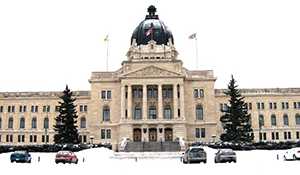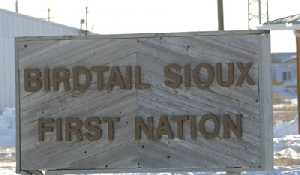Larger than first planned: TransCanada proceeding with Energy East
August 7, 2013, 1:56 am
Kevin Weedmark


TransCanada is not proceeding with Energy East as originally planned-a pipeline to move 500,000 to 850,000 barrels a day of oil from Western Canadian oilfields to eastern markets.
Instead TransCanada is seeking regulatory approval for an even bigger plan-it now plans to move 1.1 million barrels a day through the pipeline.
That's more than enough to replace the 700,000 barrels a day that eastern refineries import, so the plan now includes export facilities at St. John, New Brunswick so landlocked Western Canadian production can be exported around the world.
Of the 1.1 million barrel per day capacity, TransCanada already has binding long-term contracts for 900,000 barrels a day through its "open season" process of attracting bids.
There would be two on-ramps to the Energy East pipeline-one at Hardisty, Alta., and one in the Moosomin area to handle oil from the Bakken formation in Saskatchewan, Manitoba, and North Dakota.
The development in this area would include a terminal, and a new pipeline connecting the Moosomin compressor station with Cromer, Manitoba. There would also be a tank farm to store crude oil destined for the pipeline.
"This is an historic opportunity to connect the oil resources of western Canada to the consumers of eastern Canada, creating jobs, tax revenue and energy security for all Canadians for decades to come," said Russ Girling, TransCanada's president and CEO.
Energy East will deliver crude to refineries in Quebec as well as to the Irving Oil refinery in Saint John, N.B. Irving announced Thursday it plans to build a $300-million marine terminal at St. John to export some of the oil.
At refineries in Eastern Canada and through export markets, Western Canadian crude would be sold at world prices.
Currently, because of the difficulty and cost of reaching outside markets, Western Canadian crude sells at a $30 a barrel discount to the world price.
TransCanada estimates the project will cost about $12 billion excluding the value of its converted mainline pipeline system.
Girling said Energy East is one answer to the question of how to move crude oil from Western Canada to refineries and consumers in other markets.
"Energy East is one solution for transporting crude oil but the industry also requires additional pipelines such as Keystone XL to transport growing supplies of Canadian and U.S. crude oil to existing North American markets," Girling said.
Joe Oliver, Canada's natural resources minister, welcomed the TransCanada announcement on Energy East but said the federal government would also work to ensure pipelines are safe.
"Initiatives like this could allow Canadian refineries to process more potentially lower priced Canadian oil, enhancing Canada's energy security and making our country less reliant on foreign oil," Oliver said.
Saskatchewan Premier Brad Wall says a proposed pipeline that would move oil from Western Canada to the East Coast would bring many benefits to his province.
Wall says the project would create jobs in the province
"In terms of direct impact, we're going to see jobs in Saskatchewan as they build the terminals to accommodate the movement of more Saskatchewan oil to the East Coast," Wall said Thursday.
"It means taxation directly from the pipeline and, very significantly, it means we can maximize the price that we get for our oil. Right now we sell it at a discount to our American friends."
The premier said moving oil to Atlantic ports will result in greater profits for all of Canada.
TransCanada says the pipeline could be delivering oil to Quebec in 2017 and New Brunswick a year later.
Prime Minister Stephen Harper said Friday that job-creation is his government's top priority and that pipeline projects can help in that area.
"There are approval processes to look at environmental effects, the economic issues, to look at all those things and to come to independent evaluations," Harper told a news conference in Quebec City.
"But obviously we think it's a good idea in principle in terms of selling our energy products. We need to sell our energy products. It is, I think, a good idea that we find Pan-Canadian solutions so that all of this country benefits from our energy products and that we enhance our own energy security.
"The reality, anyone who looks at the business, is that the absolutely safest way to transport energy products is through pipelines. That's the safest way you can go."
TransCanada is planning an open house in Moosomin for Aug. 15 to answer questions about the project.



































